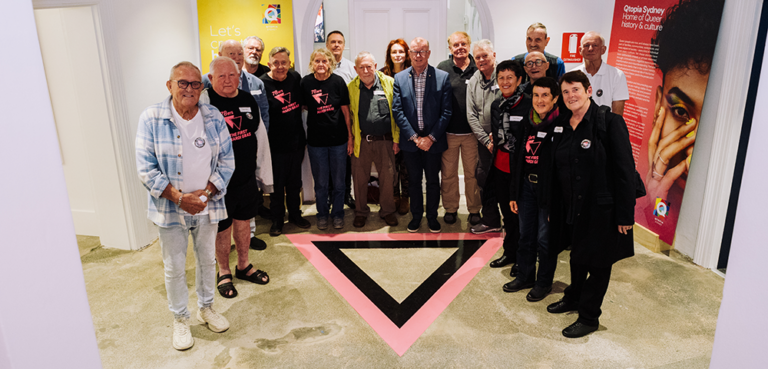Spain: A Sun-Soaked LGBTQIA+ Travel Destination With Heart, Rhythm & Abundant Queer Joy
Spain: A Sun-Soaked LGBTQIA+ Travel Destination With Heart, Rhythm & Abundant Queer Joy is a sponsored feature story from the April 2025 print edition of Star Observer. You can see the latest issue here.
There are places in the world where you feel relief as a queer person — rather than being tolerated, you’re truly seen; truly supported. Where love — in all its gloriously diverse shapes, sizes and colours — is celebrated.
Spain, with its sun-drenched streets, unapologetic zest for life, and fierce embrace of diversity, is one such place. For LGBTQIA+ travellers, it’s more than a destination. It’s an invitation to be wholly, joyfully yourself.
In the heart of Madrid, the rhythm of life pulses strongest in Chueca. Once a quiet neighbourhood, today it’s a rainbow-hued beacon for queer travellers from every corner of the globe. During Madrid Pride, which explodes across the city each July, Chueca transforms into a jubilant, defiant celebration of identity. It’s a riot of colour, sound and unshakable community togetherness.
Further east, Barcelona glimmers along the Mediterranean like a queer utopia. In the Eixample district — cheekily nicknamed ‘Gayxample’ — couples stroll hand-in-hand between tapas bars, queer art galleries, and stylish rooftop parties. Pride here is an artform, a bold and brilliant fusion of parade and performance, drawing in thousands each June. Barcelona rolls out all the stops for LGBTQIA+ visitors, serenading them with cava and sunshine.
But Spain’s queer soul isn’t confined to its cities. Just a short ride from Barcelona lies Sitges, a small coastal town with a big reputation. Long before “LGBTQIA+ friendly” became a marketing term, Sitges was quietly building its name as a haven for gay travellers. Today, it’s a seaside sanctuary where gender is fluid, love is open, and the dancefloors are packed until dawn. The town’s beloved and widely diverse Pride celebrations in June are as legendary as the sunsets that melt into the sea.

For something more exotic, Gran Canaria in the Canary Islands offers a year-round climate of inclusion. Maspalomas Pride, held each May, is a dazzling ten-day affair that rivals any global Pride festival. The Yumbo Centrum, a vibrant open-air complex of queer bars and clubs, pulses with music late into the night. Here, on the island’s golden dunes, freedom of sexuality and identity is taken to whole new heights.
You’ll quickly learn that the glorious warmth in Spain isn’t just created by the sunny weather — it radiates from the people. Spain ranks among the most LGBTQIA+-friendly countries in the world. In a recent survey, over 75% of all Spaniards voiced strong support for same-sex marriage. It’s not uncommon to see queer couples kissing on street corners, or trans and non-binary folks living happy public lives as exactly who they are.
That progress is backed by policy — marriage equality since 2005, the right to self-identify one’s gender without medical intervention since 2023, as well as a whole raft of anti-discrimination protections that strongly protect LGBTQIA+ people.

And yet, like anywhere, nuance matters. While the major cities like Madrid, Barcelona and Valencia are proudly progressive, smaller towns and rural regions may carry more traditional views. Spain’s culture is warm wherever you go, but respect for cultural norms of the locals — particularly in more conservative areas — will go a long way.
But even smaller towns and rural areas are becoming more inclusive — Rioja Alavesa in northern Spain, for example, recently received an official designation as a safe, inclusive destination for LGBTQIA+ travellers.
But wherever you go Spain offers LGBTQIA+ travellers something more profound: a deep well of culture and history. Spain has some incredible, unique queer history — like how the fiery, soul-stirring art of flamenco has long been a refuge for LGBTQIA+ artists.
Attend a show in Seville or Granada, and you may find yourself moved not just by the music, but by the queer stories of love and longing, resistance and resilience that it carries.

Food is also a culturally significant act of communion in Spain, a connection between people that could mean friendship or love (or, for that matter, lust). Sharing tapas in a crowded bar, sipping vermouth on a sunlit terrace, joining the late-night hum of a crowded market — human connection in these moments transcends labels.
Spain does not ask LGBTQIA+ travellers to disguise themselves or soften their colours. It invites them to flourish. From the cobbled alleys of Seville to the beaches of Ibiza, from the intimate drag shows of Valencia to the queer film festivals lighting up Bilbao, Spain hums with possibility and queer joy.
For those in search of a place where celebration and safety co-exist, where beauty lives in both the big moments and the quiet ones, Spain offers not just a holiday — but a homecoming.
Come as you are. Spain is waiting.
You can learn more about Spain as an LGBTQIA+ travel destination here.






